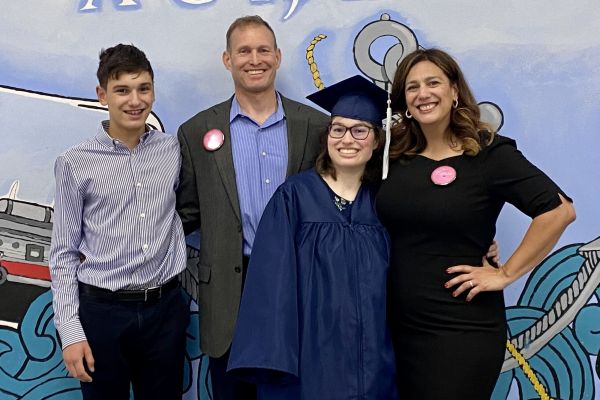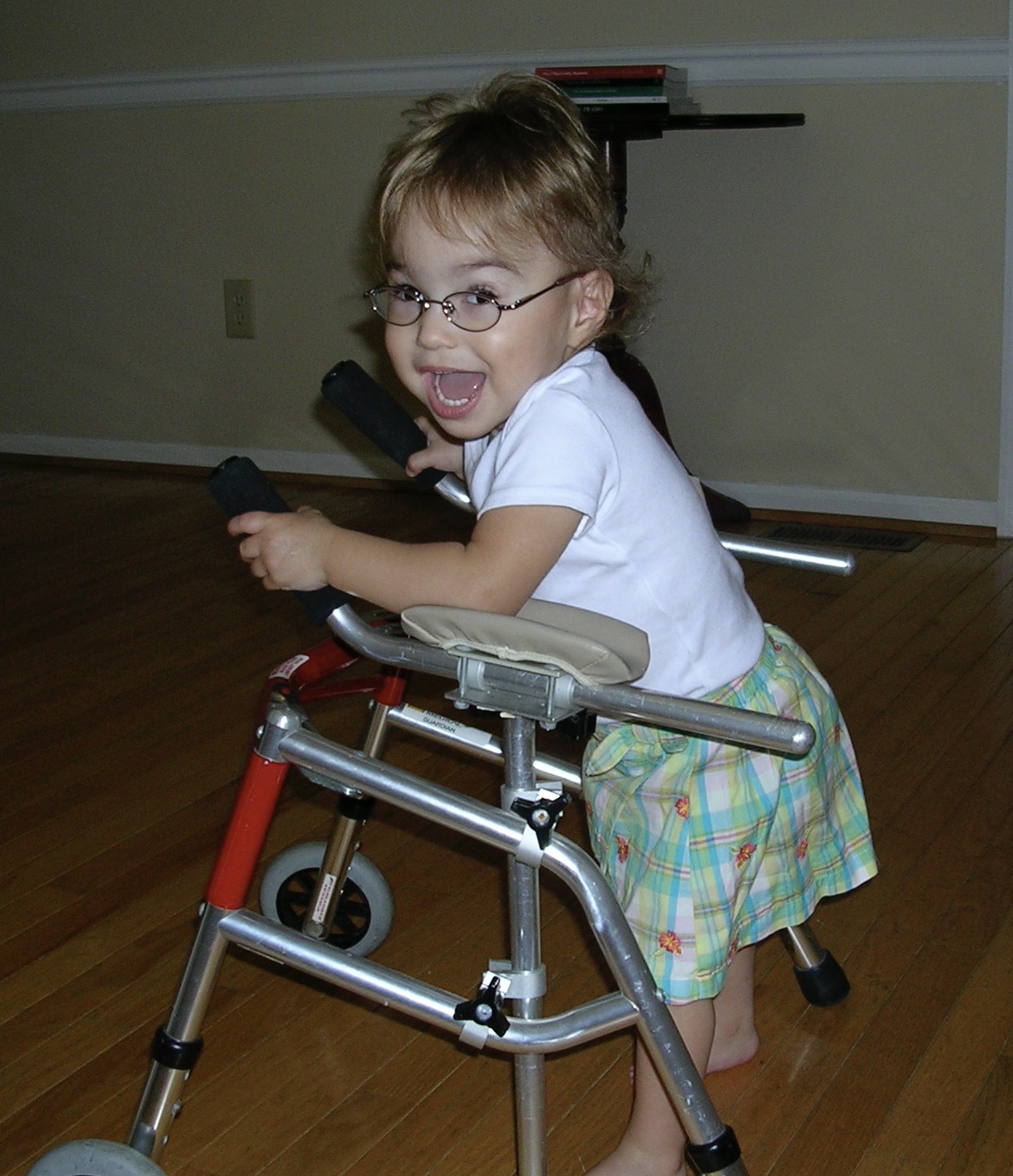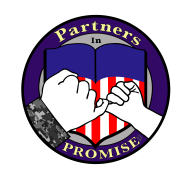
Understanding Cerebral Palsy: Our Military Family Story
| EFMP Stories, Featured Article
March is Cerebral Palsy Awareness Month. It has taken years for us to understand the implications of this diagnosis and the ways it has affected our daughter while being a military family. I hope to share more about the diagnosis, our lessons learned, and valued resources, both military and community, that have helped along the way.
What is Cerebral Palsy (CP)?
Before my daughter was born, I was ignorant of what cerebral palsy was. I did not know anyone personally diagnosed with cerebral palsy. My only knowledge of cerebral palsy was watching an actress on a TV show growing up called “The Facts of Life.” She walked and talked differently and was funny. Fast forward to when our daughter was born. The developmental pediatrician said the words “cerebral palsy,” and that began my education of all things CP.
Cerebral Palsy Explained: Causes and Effects
The most common motor disability in children is cerebral palsy. It involves the brain, as indicated by “cerebral.” Palsy means a weakness or problems with muscles. When damage or abnormal development affects the part of the developing brain that controls movement, it impacts how that person controls those muscles. There are many ways cerebral palsy can happen, which include premature birth, stroke, and birth complications that affect the amount of oxygen a baby receives. The impaired area of the brain may result in related conditions such as seizures, intellectual disability, blindness, hearing loss, and other learning disabilities.
Recognizing Symptoms and Diagnosis
You may not know your child has cerebral palsy for a couple of years. It is usually something that a pediatrician will note when watching the child’s development milestones with speech, eating, and movement and coordination, such as sitting, crawling, and walking. Once diagnosed, the severity level is classified as mild, moderate, or severe. The symptoms can range from stiff (spastic) or floppy (non-spastic) tone to irregular posture and uncontrollable movements. Additionally, different parts of the body may be affected. Someone with CP may have only one limb affected (monoplegia), while others may have all four limbs impacted (quadriplegia). Some walk unassisted or with support, while others require a wheelchair. It is a permanent condition (static) and does not progress. However, with medical treatments and advanced technology, people with CP have opportunities to live happy, healthy, and productive lives.
Our Cerebral Palsy Journey
My daughter lives with right hemiplegia. The left side of her brain was impaired, affecting her body’s right side. It has been a learning curve for us. The first resource we took advantage of was our City’s Early Intervention Program to assist with physical, occupational, and speech therapy as soon as we suspected a disability. You can self-refer or have your pediatrician refer you to determine eligibility. The first goal was for her to learn to sit, crawl, and walk. After receiving in-home physical therapy weekly, nothing was sweeter than witnessing your child finally walk at 31 months old. After that, we developed goals to improve her speech and fine motor skills.
Once a child reaches two years old, eligible children in the Commonwealth of Virginia can receive Early Childhood Special Education services in the school setting. This program is where my daughter thrived. She rode the school bus and attended a half-day program several times a week in an inclusion classroom where she received instruction and services through her Individualized Education Program (IEP). She was able to make progress on goals that would support her school readiness and development for when she entered Kindergarten.
More Than Just Motor Impairment

Initially, our daughter’s special education programming focused on the physical limitations of having Cerebral Palsy. Her first IEP eligibility category was Orthopedic Impairment. However, as she developed through her elementary years, we started to notice more areas of suspected disabilities. For example, she made comments to us about not understanding her teacher (auditory processing disorder and hearing loss) or not being able to focus (ADHD).
Staying vigilant as a parent through the special education journey is a lesson we learned to ensure our child’s unique learning needs were met as afforded by the Individuals with Disabilities Education Act. Sometimes, as parents, we didn’t know the names of the conditions, so we relied on sharing data and therapist notes with her teachers and her IEP team. The IEP eligibility categories grew through her middle school years, but it took sustained advocacy as parents to ensure that all impact areas were addressed.
Military Support Program
When our daughter resided in the NICU, a Navy senior spouse visited us and recommended that we enroll in the Exceptional Family Member Program (EFMP). We were not aware of the program at that time. This program has been beneficial to us over the years. We have been fortunate to be stationed in areas that have met our daughter’s educational and medical needs. In some cases, we chose to geobach for continuity of care, including receiving Respite Care. The EFMP program has allowed us to remain on active duty.
Find Your Community Tribe
Since there are many variations of Cerebral Palsy, finding a specific community that can help guide and support you is essential. Early on, we found an online group called Children’s Hemiplegia and Stroke Association. Finally, this was a community that understood the unique challenges of hemiplegia. It was this group that educated us on finding a physiatrist, Botox treatments, summer camps for children with CP, symptoms to look for as our kids age, and educational roadblocks that our children commonly face. To this day, we share post-secondary challenges and employment successes as our young adult children work their way to being independent.
No story is the same, but CP parents all share a common bond of trying to navigate this complex diagnosis. Here are a few valuable resources that have helped us over the years:
- National Institute of Neurological Disorders and Stroke
- Cerebral Palsy Foundation
- Cerebral Palsy Community Guide
Last, remember that Cerebral Palsy does not define our children as with any other medical diagnosis. Our children are people first with the same goals and dreams as other children. I encourage you to reach out and build a friendship with someone with CP and listen patiently. With awareness and kindness, our society will continue to increase acceptance of people with Cerebral Palsy and all disabilities.
About the Author

Michelle Norman is the Executive Director and Founder of Partners in PROMISE, a non-profit organization focused on educating, advising, and advocating for exceptional military families and their education. She is a Navy spouse of over 28 years and mother of a 20-year-old daughter with cerebral palsy and many other medical diagnoses. After years of successfully advocating and winning multiple legal cases to ensure her daughter receives the minimum education required by law, Michelle realized she was not alone. After seeing a gap in support, the Virginia Beach resident has become a passionate advocate for all military children with special needs and their families.
Michelle graduated with a degree in Petroleum Engineering from the University of Texas at Austin and worked as an Environmental Engineer civilian with the US Navy until her daughter was born prematurely. Her problem-solving background and her desire to do the right thing have resulted in top-level changes over the last few years within the Department of Defense Exceptional Family Member Program and State Disability communities.
Michelle has been recognized for her military family advocacy efforts with the 2022 Military Officers Association of America (MOAA) Changemaker Award, William and Mary PELE Law Clinic Kayla Bower Advocacy Award, 2020 Heroes at Home Military Spouse of the Year Award for Hampton Roads and 2019 AFI Navy Military Spouse of the Year Award.





Leave a Reply